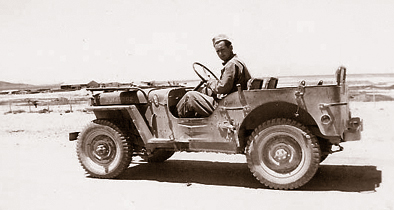- Homepage >
- Organization >
- History >
- 1945-1950
History 1945-1950
At the end of WWII, the Allies discovered the extent of the chemical and biological warfare R&D of the Axis powers and the Soviet Union. Although these weapons had not been used in the war, the US understood the threat. In particular, the US received a thorough account of the Soviet CBW program in a report written at the end of WWII by Colonel Dr. Walter Hirsch, a German CBW scientist. This report is known as the "Hirsch Report" and remained the primary resource on the Soviet CBW programs in 1989. Because the Soviets had an advanced CBW program, throughout the Cold War, military considered CBW and important part of national defense.

DPG underwent a temporary deactivation at the end of WWII, but in 1950, with the beginning of the Korean War, interest in CBW was rekindled. In 1951, CBW divisions were activated at DPG and a flurry of construction was begun. During the Cold War, radiological testing also took place at DPG. The most intense activity at the installation occurred from 1950 to 1968. Open air testing was banned in 1968.
Unease about the future of DPG became prevalent at the end of WWII. Commander Burns declared to Utah newspapers that DPG would remain a permanent installation, but he conceded that operations would probably be downsized and relocated to Simpson Springs. Colonel Graydon C. Essman succeeded Burns as CO. Essman had greater concern about the continuation of DPG and the role of the CWS and suggested that the CWS turn its sights towards R&D in atomic fission.
The concerns and debate about the future of DPG were justified. In 1947 the decision was made to mothball DPG and use it only as a "safari" facility, consolidated under the Deseret Chemical Depot. During the summers, teams from Fort Detrick and Edgewood Arsenal would arrive at the DPG facility to complete tests. Meteorological forecasting support was furnished by Tinker Air Force Base (Oklahoma) and meals were provided at Deseret Chemical Depot.
Eventually the need for a remote testing facility was realized and in 1949, the Army decided to reopen DPG. Ranchers in the area protested the reopening of a CBW proving ground (primarily because of grazing rights). In an effort to downplay the reopening of DPG, the facility was renamed the Western Chemical Center and both Deseret Chemical Depot and DPG were part of the Center. In 1950 the DPG facility was reactivated by the Chief of the Chemical Corps (formerly the CWS) and its new CO was Lieutenant Colonel Speers E. Ponder.
For a more detailed look at the history of Dugway Proving Ground, see the links below.
HISTORY  1800-1942
1800-1942  1942-1945
1942-1945  1945-1950
1945-1950  1950-1963
1950-1963  1963-1972
1963-1972  1972-1989
1972-1989
